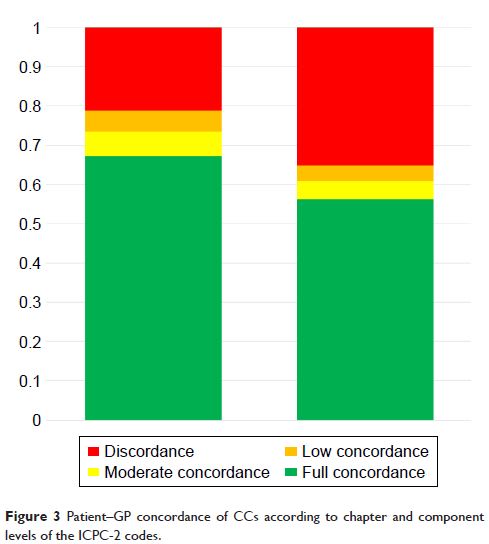9 7 8 1 6
论文已发表
注册即可获取德孚的最新动态
IF 收录期刊
- 3.3 Breast Cancer (Dove Med Press)
- 3.4 Clin Epidemiol
- 2.5 Cancer Manag Res
- 2.9 Infect Drug Resist
- 3.5 Clin Interv Aging
- 4.7 Drug Des Dev Ther
- 2.7 Int J Chronic Obstr
- 6.6 Int J Nanomed
- 2.5 Int J Women's Health
- 2.5 Neuropsych Dis Treat
- 2.7 OncoTargets Ther
- 2.0 Patient Prefer Adher
- 2.3 Ther Clin Risk Manag
- 2.5 J Pain Res
- 2.8 Diabet Metab Synd Ob
- 2.8 Psychol Res Behav Ma
- 3.0 Nat Sci Sleep
- 1.8 Pharmgenomics Pers Med
- 2.7 Risk Manag Healthc Policy
- 4.2 J Inflamm Res
- 2.1 Int J Gen Med
- 4.2 J Hepatocell Carcinoma
- 3.7 J Asthma Allergy
- 1.9 Clin Cosmet Investig Dermatol
- 2.7 J Multidiscip Healthc

已发表论文
Patient-provider concordance in the perception of illness and disease: a cross-sectional study among multimorbid patients and their general practitioners in Switzerland
Authors Neuner-Jehle S, Zechmann S, Grundmann Maissen D, Rosemann T, Senn O
Received 17 March 2017
Accepted for publication 13 June 2017
Published 22 August 2017 Volume 2017:11 Pages 1451—1458
DOI https://doi.org/10.2147/PPA.S137388
Checked for plagiarism Yes
Review by Single-blind
Peer reviewers approved by Dr Akshita Wason
Peer reviewer comments 2
Editor who approved publication: Dr Johnny Chen
Background: Multiple
chronic health conditions are leading to multiple treatment procedures and
polypharmacy. Prioritizing treatment according to patients’ needs and
preferences may be helpful for deprescribing. Thus, for improving health care,
it is crucial for general practitioners (GPs) to perceive the chief complaints
(CCs) of patients. The primary aim of this study was to investigate the
patient–provider concordance of CCs and the secondary aim was to investigate
the concordance between CCs and diagnosis, in a sample of Swiss multimorbid
patients.
Materials and methods: A cross-sectional analysis based on a cluster randomized controlled trial (RCT) among 46 GPs, recruited between March 2015 to July 2016, and 334 multimorbid patients (≥60 years taking ≥5 drugs for at least 6 months) in Northern Switzerland was performed. CCs listed by GPs and by patients (n=128) were classified according to the International Classification of Primary Care, version 2 (ICPC-2) coding system on chapter and component level and defined as concordant if ICPC-2 codes of patients and GPs were identical. Concordance was classified into full, moderate or low, depending on the ranking of patients’ CCs on GPs’ list. As secondary outcome, we compared patients’ CCs to GPs’ diagnosis. Statistics included descriptive measures and a multivariate regression analysis of factors that are modifying concordance.
Results: The mean age of patients was 76.9 (SD 8.1) years, where 38% were male, taking 7.9 (SD 2.6) drugs on the long term. The most frequent complaint was pain. Concordance of the CC was given in 101/128 (78.9%) on the ICPC-2 chapter level, whereby 86/128 (67.2%) showed full, 8/128 (6.3%) moderate and 7/128 (5.5%) low concordance; 27/128 (21.1%) were discordant. Concordance between CCs and diagnosis was 53.6%. Concordance increased with the intensity of the CC rated by patients (OR 1.48, CI 1.13–1.94, P <0.001). The younger age and higher intake of drugs were significantly associated with an increased concordance between CCs and diagnosis.
Conclusion: A majority of GPs perceive the CCs of the multimorbid patients correctly, but there is room for improvement.
Keywords: deprescribing, multimorbidity, patient–provider concordance, chief complaint
Materials and methods: A cross-sectional analysis based on a cluster randomized controlled trial (RCT) among 46 GPs, recruited between March 2015 to July 2016, and 334 multimorbid patients (≥60 years taking ≥5 drugs for at least 6 months) in Northern Switzerland was performed. CCs listed by GPs and by patients (n=128) were classified according to the International Classification of Primary Care, version 2 (ICPC-2) coding system on chapter and component level and defined as concordant if ICPC-2 codes of patients and GPs were identical. Concordance was classified into full, moderate or low, depending on the ranking of patients’ CCs on GPs’ list. As secondary outcome, we compared patients’ CCs to GPs’ diagnosis. Statistics included descriptive measures and a multivariate regression analysis of factors that are modifying concordance.
Results: The mean age of patients was 76.9 (SD 8.1) years, where 38% were male, taking 7.9 (SD 2.6) drugs on the long term. The most frequent complaint was pain. Concordance of the CC was given in 101/128 (78.9%) on the ICPC-2 chapter level, whereby 86/128 (67.2%) showed full, 8/128 (6.3%) moderate and 7/128 (5.5%) low concordance; 27/128 (21.1%) were discordant. Concordance between CCs and diagnosis was 53.6%. Concordance increased with the intensity of the CC rated by patients (OR 1.48, CI 1.13–1.94, P <0.001). The younger age and higher intake of drugs were significantly associated with an increased concordance between CCs and diagnosis.
Conclusion: A majority of GPs perceive the CCs of the multimorbid patients correctly, but there is room for improvement.
Keywords: deprescribing, multimorbidity, patient–provider concordance, chief complaint
